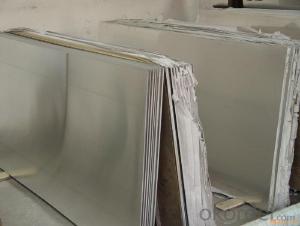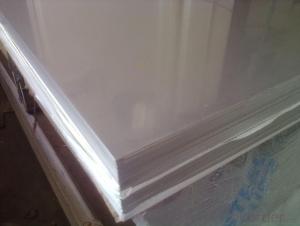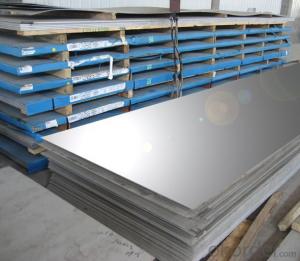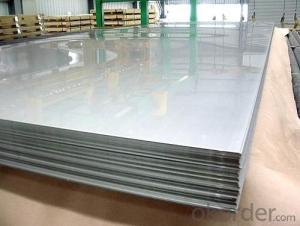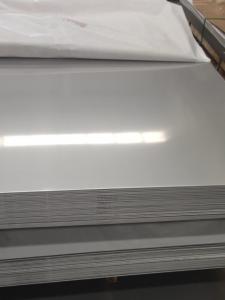Stainless Steel Plate 309S with No.4 Surface Treatment
- Loading Port:
- Shanghai
- Payment Terms:
- TT OR LC
- Min Order Qty:
- 500 m.t.
- Supply Capability:
- 5000000 m.t./month
OKorder Service Pledge
OKorder Financial Service
You Might Also Like
Hot sale stainless steel sheet 201/202/304/304l/310S/309S/316L/316Ti/316/316l/321,410/420/430/444/443/409L, and 904L.
Description of Stainless Steel Sheet:
Description | steel sheet,hot rolled steel sheet,cold rolled steel sheet, steel sheet,sheet,steel plate |
Standard | ASME, ASTM, EN ,BS,GB,DIN, JIS etc |
Application | Steel sheet applies to construction field, ships building industry, petroleum & chemical industries, war and electricity industries, food processing and medical industry, boiler heat exchanger, machinery and hardware fields. |
Packaging | Standard export sea-worthy packing |
Delivery time | 10-30 days |
Quality | No.1 |
Productivity | 500 tons/Day |
Note | Our company has cooperative relation between the domestic agents. Stainless steel sheet can be made accordingto the customers requirements. Fasten delivery. Quality assured. |
Contacts | If you have any question,please feel free contact me. |
Stainless steel sheet surface finish characteristics
Surface finish | Characteristics and application |
2B | The surface brightness and flatness of no2B is better than no2D. then through a special surface treatment to improve its mechanical properties,No2B could nearly satisfy comprehensive uses. |
No.1 | Polished with abrasive belt of grit#100-#200, have better brightness with discontinuous coarse stria, used as inner and external ornaments for building, electrical appliances and kitchen utensils etc. |
No.4 | Polished with abrasive belt of grit #150-#180,have better brightness with discontinuous coarse stria, but thinner than No3, are used as bathtub buildings inner and external ornaments electrical appliances kitchen utensils and food processing equipment etc. |
HL | Polished with abrasive belt of grit #150-#320 on the NO.4 finish and has continuous streaks, mainly used as buildings ornaments elevators, door of building, frontal plate etc. |
BA | Cold rolled, bright annealed and skin-passed, the product have excellent brightness and good reflexivity like mirror, kitchen apparatus, ornament etc. |
8K | The product have excellent brightness and prefer reflexivity can to be the mirror. |
Main Features of stainless steel sheet :
•Escalator, Elevator, Doors
•Furniture
•Production tools, Kitchen appliances, freezers, cold rooms
•Auto Parts
•Machinery and Packaging
•Equipment and Medical devices
•Transport system
Product Details:
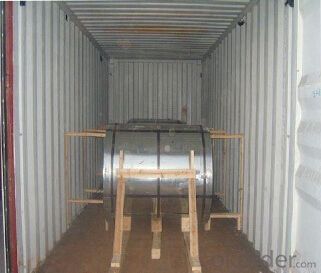


Sandard Seaworth Packing(wooden packing with water proof paper)


FAQ:
1. What's the quality?
very fine
2. How long get reply?
within 24 hours
If you have any question about stainless steel sheets,donot forget to sending the email to Us! You will get the competitive Price and have a very good experience about the Buying Process! CNBM International Corporation is always your trustful friend!
- Q: What are the different thickness tolerances for stainless steel sheets?
- The different thickness tolerances for stainless steel sheets can vary depending on the specific grade and type of stainless steel being used. Generally, the industry standard tolerances for stainless steel sheets range from +/- 0.005 inches to +/- 0.010 inches for thinner sheets, and from +/- 0.010 inches to +/- 0.015 inches for thicker sheets. These tolerances ensure that the thickness of the stainless steel sheets remains within an acceptable range for various applications, including construction, automotive, and manufacturing industries. However, it is important to note that specific tolerances may vary depending on the manufacturer or supplier, as well as the intended use of the stainless steel sheets. Therefore, it is always advisable to consult the relevant specifications provided by the manufacturer or supplier to determine the exact tolerances for a particular stainless steel sheet.
- Q: What is the standard size of a stainless steel sheet?
- The standard size of a stainless steel sheet can vary depending on the manufacturer and the specific application. However, common standard sizes for stainless steel sheets include 4 feet by 8 feet, 5 feet by 10 feet, and 4 feet by 10 feet.
- Q: How do you determine the thickness of a stainless steel sheet?
- There are multiple methods at your disposal for determining the thickness of a stainless steel sheet. The most commonly used and precise approach involves utilizing a digital or analog caliper. This particular instrument allows for highly accurate measurements of the sheet's thickness. Simply position the caliper jaws on opposite sides of the sheet and close them until they rest snugly against the surface. The caliper will display the measurement, indicating the thickness of the stainless steel sheet. An alternative method involves employing a micrometer, which is akin to a caliper but offers even more precise measurements. By placing the jaws of the micrometer on the edge of the sheet and gently closing them until contact is made, the micrometer will provide a reading that reveals the thickness of the stainless steel sheet. Should these instruments be unavailable, you can still determine the thickness of a stainless steel sheet by consulting its specifications or the manufacturer's information. Typically, stainless steel sheets are accompanied by labels or tags that clearly indicate the thickness, allowing for easy reading and verification. In certain instances, it may be necessary to estimate the thickness of a stainless steel sheet without access to measuring tools. In such cases, you can compare the sheet to known reference materials of varying thicknesses. By visually comparing the sheet to these references, you can make an informed estimation regarding its thickness. However, it is important to note that this method is less accurate and should only be employed as a last resort.
- Q: What are the different types of stainless steel sheet perforations available?
- There are several types of stainless steel sheet perforations available, including round, square, slotted, hexagonal, and decorative patterns. These perforations vary in shape, size, and spacing, providing different aesthetics and functionality for various applications.
- Q: How do you prevent warping of stainless steel sheets?
- There are several measures that can be taken to prevent warping of stainless steel sheets. These include: 1. Storage and handling: Stainless steel sheets should be stored in a clean and dry environment, away from moisture or excessive heat. It is important to handle the sheets carefully, avoiding any unnecessary bending or pressure that could cause warping. 2. Welding techniques: When welding stainless steel sheets, it is crucial to use the correct techniques and procedures. Proper heat control and weld placement can help minimize the risk of warping. Preheating the sheets before welding can also prevent distortion. 3. Stress relieving: This involves heating the stainless steel sheets to a specific temperature and then cooling them slowly. Stress relieving helps eliminate residual stresses that could lead to warping. 4. Support during machining: Proper support is important when machining stainless steel sheets to prevent warping. Clamps or fixtures can be used to securely hold the sheets in place. 5. Minimize heat exposure: It is important to avoid prolonged exposure to high temperatures during processes like cutting, grinding, or forming. Using coolants or lubricants during these processes can dissipate heat and minimize the risk of warping. 6. Choose the right grade and thickness: Selecting the appropriate grade and thickness of stainless steel sheets for a specific application is essential. Thicker sheets generally have more resistance to warping, while certain grades may be more prone to distortion. Consulting with a materials expert or engineer can help in selecting the right stainless steel sheets for a project. By implementing these preventive measures, the risk of warping stainless steel sheets can be significantly reduced, ensuring their integrity and longevity.
- Q: What are the main chemical constituents of stainless steel plates?
- Stainless steel not only refers to a stainless steel, but more than one hundred kinds of industrial stainless steel, the development of each kind of stainless steel in its specific application areas have good performance. The key to success is to find out what the purpose is, and then determine the correct type of steel. There are usually only six kinds of steel related to the application of building construction. They all contain 17 to 22% chromium, and better steel also contains nickel. The addition of molybdenum can further improve atmospheric corrosion, especially for atmospheric corrosion resistant chlorides.
- Q: Are stainless steel sheets suitable for water storage tanks?
- Indeed, water storage tanks can be constructed using stainless steel sheets. Stainless steel possesses a remarkable resistance to corrosion, rendering it an optimal selection for water preservation. Its durability and longevity eliminate the need for frequent upkeep. Moreover, the smooth and non-porous surface of stainless steel sheets inhibits bacterial proliferation, thereby guaranteeing the cleanliness and safety of the stored water for consumption. Furthermore, stainless steel exhibits resistance against UV rays, extreme temperatures, and chemicals, affirming its dependability as a material for water storage tanks.
- Q: Are stainless steel sheets suitable for heat transfer equipment?
- Yes, stainless steel sheets are suitable for heat transfer equipment. Stainless steel has excellent thermal conductivity properties, which means it can efficiently transfer heat from one medium to another. It can withstand high temperatures without warping or deforming, making it ideal for use in heat transfer applications. Additionally, stainless steel is corrosion-resistant, ensuring the longevity and durability of the equipment. Its hygienic properties also make it suitable for industries where cleanliness is crucial, such as food and pharmaceutical industries. Overall, stainless steel sheets are a reliable and efficient choice for heat transfer equipment.
- Q: Can stainless steel sheets be used for stairs and railings?
- Yes, stainless steel sheets can be used for stairs and railings. Stainless steel is a versatile and durable material that is often used in architectural and interior design applications. It is resistant to corrosion, which makes it suitable for outdoor use and areas with high humidity or exposure to chemicals. Stainless steel sheets can be fabricated into various shapes and sizes, making them ideal for constructing stairs and railings with a sleek and modern look. Additionally, stainless steel is easy to clean and maintain, making it a practical choice for areas with high traffic or public spaces.
- Q: What are the different shapes available for stainless steel sheets?
- Stainless steel sheets come in various shapes to meet specific requirements and applications. Let's explore some of the most common options: 1. Rectangular sheets: These sheets are widely used and can be easily cut to the desired dimensions. They are available in different standard sizes. 2. Round sheets: Round stainless steel sheets are ideal for decorative purposes or when a seamless or curved surface is desired. They come in various diameters and thicknesses. 3. Square sheets: Similar to rectangular sheets, square stainless steel sheets are versatile and provide a symmetrical and uniform appearance. They can be easily customized to fit specific sizes. 4. Perforated sheets: These sheets have a regular pattern of small holes punched through them. They are commonly used in architectural and industrial applications that require ventilation, filtration, or visibility. 5. Embossed sheets: These sheets feature raised or recessed patterns on their surface, adding texture and visual interest. They find applications in interior design, furniture manufacturing, and automotive industries. 6. Expanded metal sheets: These sheets are created by cutting and stretching a solid stainless steel sheet, resulting in a grid-like pattern with diamond-shaped openings. They are commonly used in security fencing, walkways, and industrial settings. 7. Checker plate sheets: Also known as tread plate or diamond plate, these sheets have a raised diamond pattern on the surface. They are frequently used for slip-resistant flooring, stair treads, and decorative accents. These examples represent just a few of the available stainless steel sheet shapes. The choice of shape depends on the specific requirements, aesthetic preferences, and functional needs of the project.
Send your message to us
Stainless Steel Plate 309S with No.4 Surface Treatment
- Loading Port:
- Shanghai
- Payment Terms:
- TT OR LC
- Min Order Qty:
- 500 m.t.
- Supply Capability:
- 5000000 m.t./month
OKorder Service Pledge
OKorder Financial Service
Similar products
Hot products
Hot Searches
Related keywords



